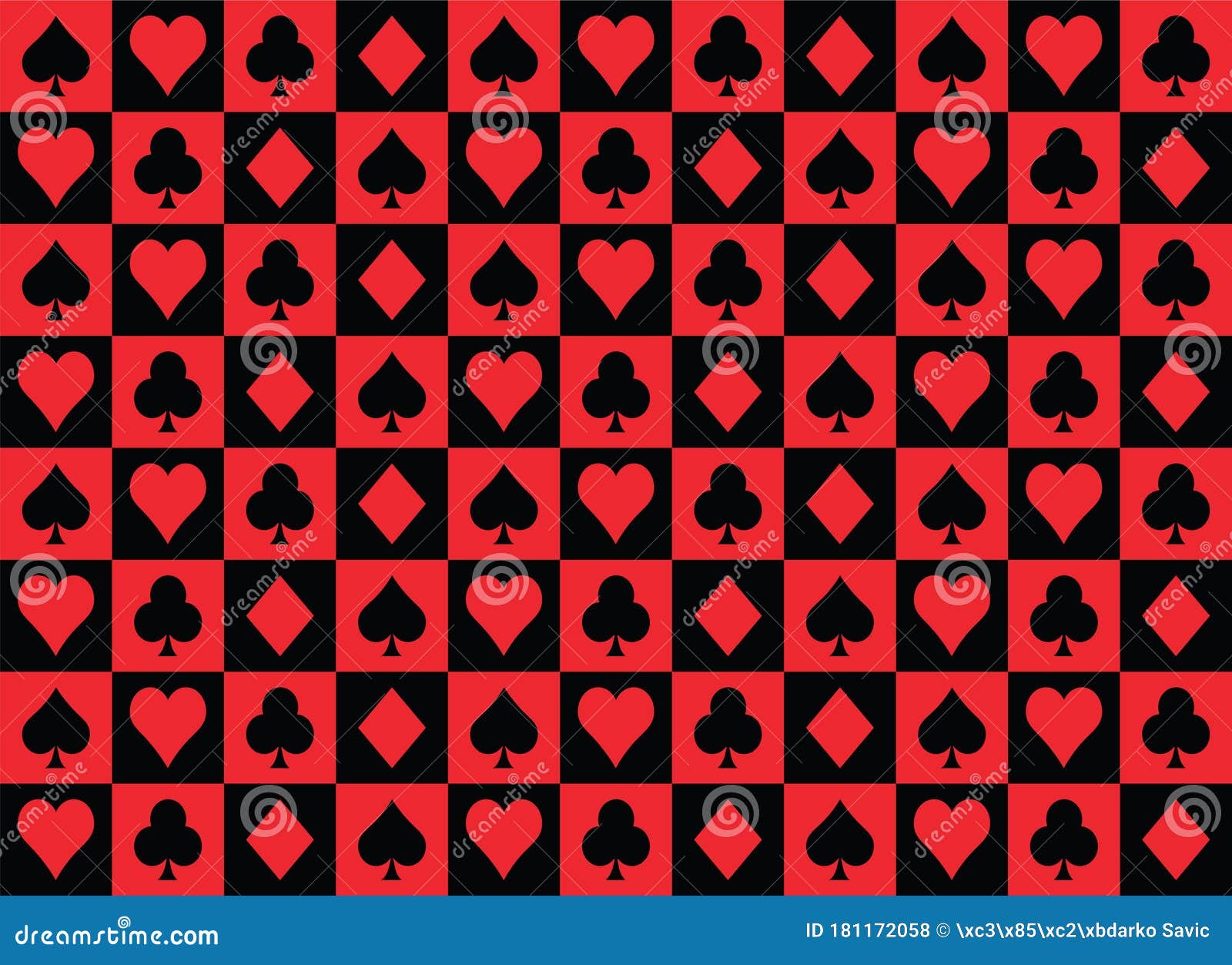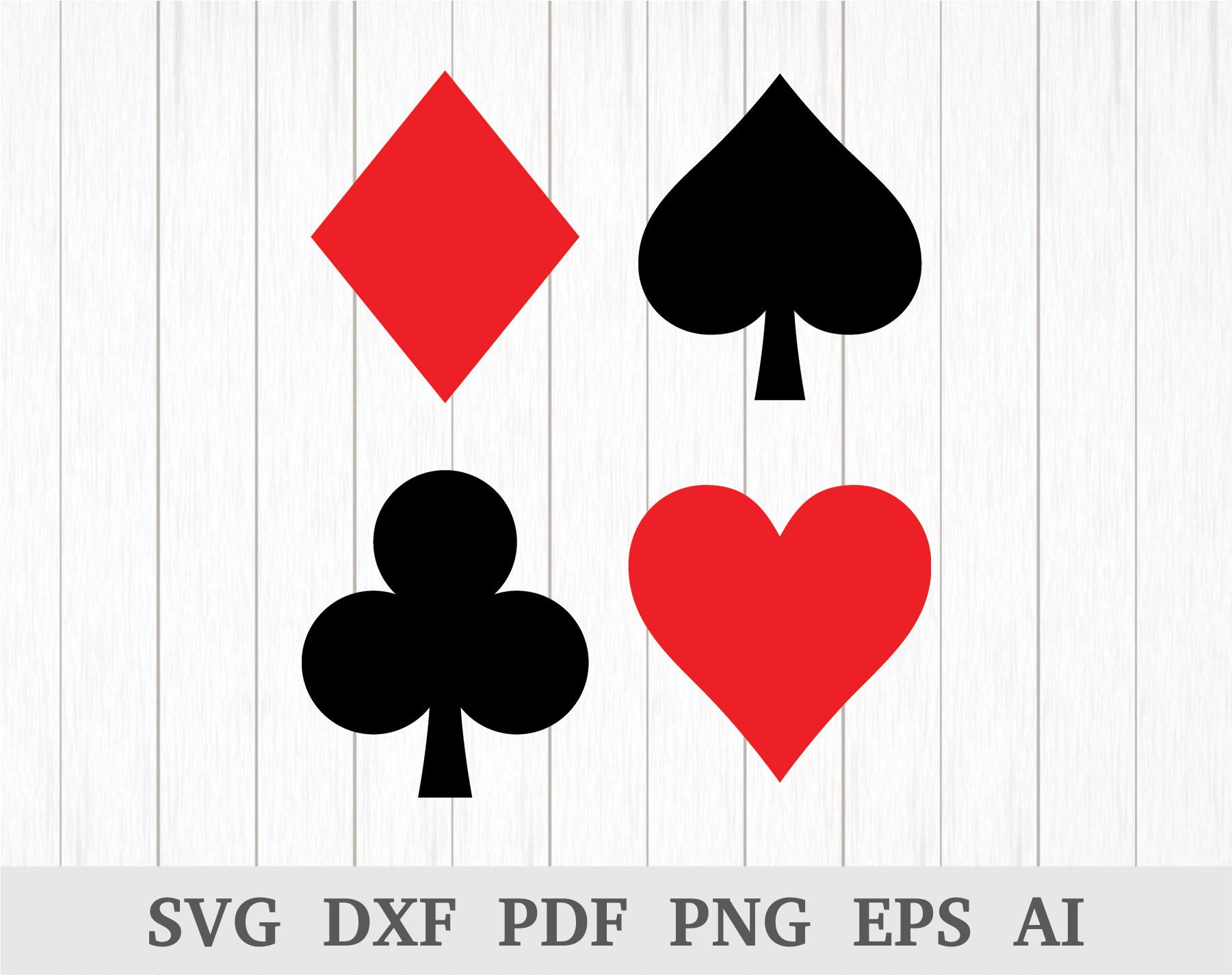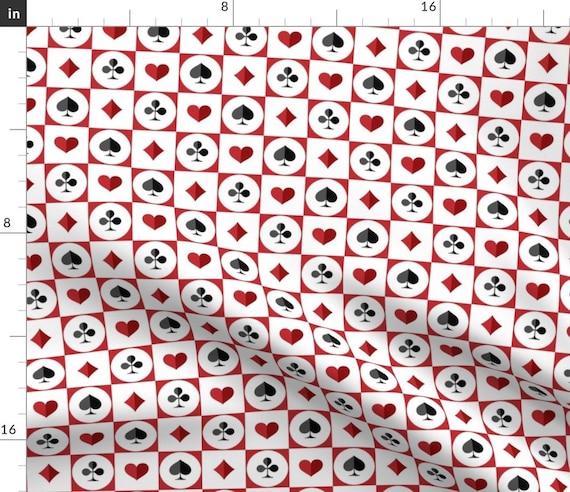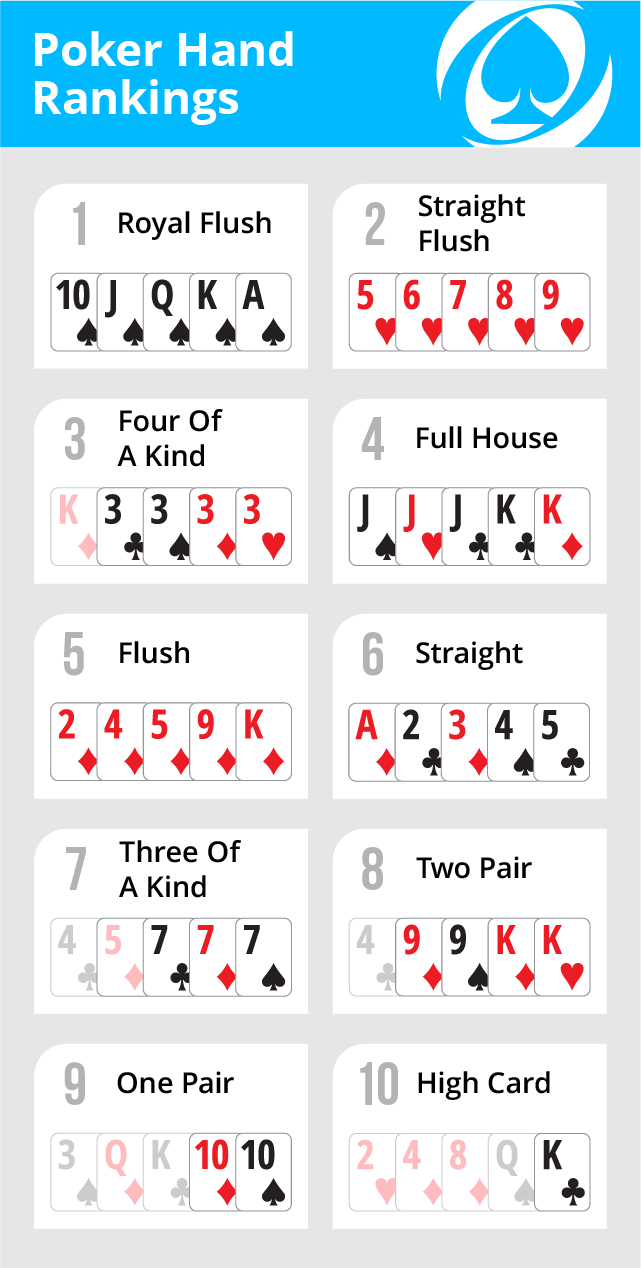Poker Suits Order
Poker hands rankings are depending on the likelihood that you will get them.
FREE Shipping on your first order shipped by Amazon. Queen of Hearts Card Suit Halloween Costume Poker T-shirt. 3.7 out of 5 stars 5.
As for identical poker hands, they rank depending on the player who has the highest values.
The player with the stronger hand decides which hand ranks better.
- People sometimes ask this question about ranking of suits because they want to decide which of two royal flushes is higher in poker. In that case, the correct answer (for the official casino / tournament game) is that in poker all the suits are equal, and that when such a tie occurs you split the pot.
- Suits are used to break a tie between cards of the same rank (no redeal or redraw). Dealing a card to each player is used to determine things like who moves to another table. If the cards are dealt, the order is clockwise starting with the first player on the dealer’s left (the button position is irrelevant).
- Most poker games do not rank suits; the ace of clubs is just as good as the ace of spades. However, small issues (such as deciding who deals first) are sometimes resolved by dealing one card to each player. If two players draw cards of the same rank, one way to break the tie is to use an arbitrary hierarchy of suits.
- There are 52 cards in a deck, divided into four suits of 13 ranks each. The suits are all of equal value - no suit is higher than any other suit. In Poker, the Ace is the highest card and the 2 card (Deuce) is the lowest. However, the Ace can also be used as a low card, with the value of 1.
You can remember important poker hands through mnemonic.
It is a popular memory device used for poker games.
However, you should not just rely on a memory device to work your way through poker hands.
It is best you understand the basic principles to know your best move.
Read more: Poker Hand: Should You Have Favorites?
You cannot have a memory device giving you hints while playing on the table.
Here are some important tips to learn to understand poker hands better and increase your win rate.
EXCLUSIVE BONUS CONTENT
Get this article as a beautiful, easily save as a PDF or print for daily use.
Download an amazing infographic covering this topic to share with your friends.
Get a free copy of our popular eBook “21 Secrets to Dominate the Poker Tables Like a Pro“.
Lower Ranking Poker Hands
Take note that the 0, 1, 2 and 3 comprise the lowest poker hands.
Be careful when having these types of cards in your hand.
Poker Suit Order Photo
Remember that 0 is a high card. When you got 0 pairs, then the rank or value of your hand will rely on your highest card.


Your highest card determines the value or rank of your entire hand.
Do not forget that ace ranks the highest while 2 ranks the lowest.
Understand the following:
- One pair – this means you get two cards with similar value but with different suits. An example would be two of hearts and two of clubs.
- Two Pairs – this means you get two cards with similar value but under different suits. An example would be two of hearts with two of clubs and three of diamonds with three of spades.
- Three of a Kind – this means you get three cards with similar value but with different suits. An example would be four of diamonds with four of spades and four of clubs.
Separate Hands According to Straight
A straight hand can be categorized in between poker hand rankings.
It is not that high or low in the ranking.
As the name implies, you get a straight if you have five cards in any suit with consecutive values.
Related article: The 6 Best Poker Starting Hands You Must Know About
For instance, your straight hand may feature cards 2, 3, 4, 5, including 6. So long as you have them in order, the suit does not matter.
You have a straight.

You can also create a straight hand with a queen, jack, king, ace and 10 from any of the suits.
Understand the Highest-Ranking Poker Hands
Memorize the cards creating the highest-ranking poker hands.
You can better memorize if you count the numbers of letters of the hand’s name.
Take note of the following:
- 5: Flush – this means you get five cards under the same suit and of any value. For instance, you can form a flush with any of the cards under the suit of diamonds. Whether it would be 9, 7, 6, 2 and jack.
- 9: Full House – this means you have three of a kind and a one pair
- 11: Four of a Kind – this comes with four cards with a similar value under the four suits. For example, 8 of hearts, 8 of diamonds, 8 of spades and 8 of clubs.
- 13: Straight Flush – this comes with five cards under the same suit and in consecutive values. For instance, you can form a straight flush with 2, 3, 4, 5 and 6 of spades.
- 18: Royal Straight Flush – you can form a royal straight flush using an ace for the high card including 10, jack, queen, king and ace of spades. This hand is unbeatable.
High Card
Given a hand cannot be considered in any category then the card with the highest value will decide its rank.
For instance, if the set of cards got the Queen as the highest, then the hand ranks in relation to the queen.
If another player has a similar card then you get the second highest, if not then the third, fourth or even fifth will be considered.
This may be confusing at first, but you will get the hang of it once exposed to some high card situations.
Community Cards
Poker Suits In Order
As mentioned in the previous sections, a poker hand consists of five cards.
Depending on their variations, you can reach a certain position or advantage over other players on the table.
The five cards will come from what you have been dealt with or what you have chosen.
For instance, under Texas Hold’em, every player will get two private cards.
However, they can also choose from five community cards.
All players are given the same access. To an extent, all players get equal opportunities at creating a strong hand.
All in all, you can work with seven cards, but you can only choose the five best cards to proceed with the game.
If you are new to poker, then you have to read through the list again.
You cannot get a good grasp of all the rankings unless you go through the list repeatedly.
It also helps to do practice games so you will become familiarized with the hands naturally and slowly. Nothing beats knowing the hands or card arrangements by heart.
You don’t want to miss this: Top 10 Best Poker Books Every Poker Addict Should Read
You need to study the type of poker game you are playing.
Some poker games assign different values to hands.

On others, it might be different which hands decide the winner.
You will understand the real value or strength of the cards as you play along. If possible, play as many variations as you can.
final word
This can help you master how to create and manipulate cards whenever you can.
There are also many cheat sheets or PDF listings you can access to download hand rankings and images.
It can be helpful to memorize the hands if you can see pictures attributed to the rankings.
Some people are visual creatures.
They learn better from what they see. It may do the trick for you.

Go through your chart constantly.
These are just some of the ways you can improve your poker game.
Take some time to master them before taking other lessons.
On the Ordering of Playing Card Suits
(or, why “CHaSeD” is bad for you)
Each individual playing card is identified by the unique combination of a value and a suit. The values are numeric in nature (if we assign 11, 12, and 13 to the Jack, Queen, and King, respectively); as such, we can order them easily, exploit their odd-even nature, use them in mathematical operations, etc. The methods underlying many effects are based on this numeric property of the values.
It’s equally useful to assign such characteristics to the suits. Many people order the suits simply by memorizing an arbitrary sequence (usually one that alternates the colours): thus we have such mnemonics as CHaSeD, SHoCkeD, DuCHeSs, CoDfiSH, and HiS DeCk.
The drawback of this approach is that it simply yields an order, and fails to assign useful numeric meanings to the individual suits. Should we need the third value in a numerical sequence, we instantly know that it is a three, but when we try to do this with suits, we introduce extraneous thinking (“Let’s see, I’m using the CHaSeD order, so the third one is a Club … Heart … Spade!”). Similarly, if we wish to make use of a suit’s value for some computational purpose, we are left with questions like “What is the value of a Heart?”
An obvious analogy here is the Latin alphabet. While most people know the sequence (ABCDEFG …), and thus can quickly determine which character follows “M”, few know the numerical values of the letters (their positions), and can instantly name the 17th letter, or know at which position “R” falls.
All of this is far from ideal. For playing cards, though, the problem is easily resolved, by exploiting the natural numerical order suggested by the standard French suits, indicated by the points or lobes in their shapes, as depicted here:
This particular ordering (which corresponds to the SHoCkeD mnemonic, though that’s a less useful way to recall it) has additional memorable significance. Spades are widely considered the #1 suit (hence the decorative Ace of Spades). The major suits (cf., Contract Bridge) are together, and precede the minor suits. The even suits are red, and the odd suits are black: black being the “odd” colour makes sense, as black isn’t really a colour (it’s the absence of colour). Further, the black symbols themselves are somewhat odd, enjoying limited recognition by non-card-players; the Heart and Diamond, on the other hand, are basic, universally recognized shapes.
Consequently, this is my personal choice — and strong recommendation — for the most effective playing card suit order. The concept dates back at least to the J. Russell Duck (aka “Rusduck”) publication of “Spades Hearts Clubs Diamonds” in Phoenix magazine (Issue #255, May 1952), pg. 1020. Once the most prevalent ordering used by European magicians, it has of late been supplanted by the much inferior CHaSeD sequence (a victory of imitation over imagination, with a consequent loss of functionality). But once you adopt and internalize it, you will often be reminded of its advantages, and immediately and forever know that the third suit is a Club.
… Doug Dyment